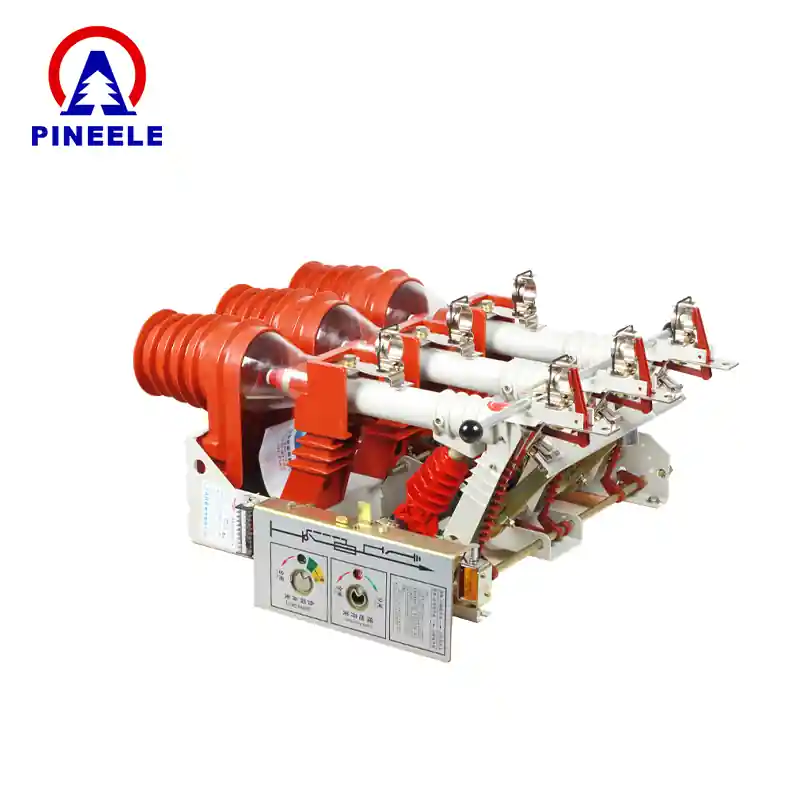
What Is a High Voltage Load Break Switch?
A high voltage load break switch (LBS) is a type of electrical switch used in medium to high voltage power distribution systems, typically ranging from 11 kV to 36 kV and beyond. Its core function is to safely interrupt and isolate electrical loads in a circuit under normal and light load conditions. Unlike circuit breakers, LBS are not designed to interrupt fault currents, but they can safely break load currents, making them indispensable in distribution automation and sectionalizing.
These switches are often manually or motor-operated and can be found in outdoor or indoor substations, pole-mounted systems, and pad-mounted switchgear. The switch usually features arc-quenching technologies like SF6 gas or vacuum interrupters to ensure safe and reliable disconnection.
Applications of High Voltage Load Break Switches
High voltage LBS are widely used in various settings:
- Utility distribution networks: For sectionalizing feeders, improving system reliability.
- Industrial plants: For isolating parts of the internal distribution network.
- Renewable energy systems: Integration with wind farms or solar PV fields.
- Ring main units (RMUs): As a part of compact switchgear assemblies.
- Pole-mounted distribution automation: Particularly in rural and semi-urban grids.
Market Trends and Industry Insights
According to IEEE and industry sources like IEEMA, the demand for high voltage load break switches is growing due to:
- Urbanization and grid modernization
- Rising renewable energy installations
- Government mandates for grid automation
For example, according to MarketsandMarkets, the global switchgear market is projected to reach USD 120 billion by 2028, with load break switches forming a critical segment, especially in smart grid infrastructure.
Technical Specifications
Below is a representative technical parameter table for a typical 24kV High Voltage Load Break Switch:
| Parameter | Value |
|---|---|
| Rated Voltage | 24 kV |
| Rated Current | 630 A |
| Rated Frequency | 50/60 Hz |
| Rated Short-Time Withstand Current | 16 kA (1s) |
| Peak Withstand Current | 40 kA |
| Breaking Capacity | Load current up to 630 A |
| Insulation Medium | SF6 / Vacuum / Air |
| Operation Mechanism | Manual / Motorized |
| Mounting Type | Pole-mounted / Indoor |
| Standards Compliance | IEC 62271-103, IEEE C37.74 |
Comparison With Other Switchgear Components
| Feature | Load Break Switch | Circuit Breaker | Disconnect Switch |
|---|---|---|---|
| Load Breaking Ability | Yes (limited) | Yes (including fault) | No |
| Fault Interruption | No | Yes | No |
| Arc Quenching Method | Gas / Vacuum | Oil / SF6 / Vacuum | Air |
| Typical Cost | Moderate | High | Low |
| Automation Compatible | Yes | Yes | Limited |
Selection Guide: How to Choose the Right High Voltage LBS
When selecting a high voltage load break switch, consider the following:
- Rated voltage and current: Match your distribution line’s specifications.
- Insulation type: SF6 gas offers compact design and high reliability; vacuum types are more eco-friendly.
- Operation mechanism: Choose between manual and motorized depending on your automation needs.
- Environmental conditions: Consider corrosion-resistant materials for coastal or polluted areas.
- Compliance: Ensure the switch meets IEC 62271-103 or IEEE standards.
Trusted Manufacturers and Certifications
When sourcing high voltage LBS, consider established global manufacturers like:
- ABB
- Schneider Electric
- Siemens
- Eaton
- Lucy Electric
Look for certifications such as:
- ISO 9001 (Quality Management)
- IEC 62271-103 (High-voltage switchgear and controlgear)
- CE / ANSI / IEEE compliance depending on your region.
Frequently Asked Questions (FAQ)
A1: No. Load break switches are not designed to interrupt high fault currents. For that purpose, circuit breakers should be used. LBS are suitable for breaking load and performing isolations.
A2: Maintenance depends on the insulation medium. SF6 gas types may require periodic gas pressure checks, while vacuum-insulated switches typically offer maintenance-free operation for many years.
A3: Yes, SF6 is a potent greenhouse gas. That’s why many manufacturers now offer vacuum or air-insulated alternatives as eco-friendly options.
Final Thoughts
The high voltage load break switch is an essential component in modern power distribution, especially for grid reliability, renewable energy systems, and safe maintenance operations. When selected correctly and maintained properly, it ensures stable and safe energy flow throughout the electrical infrastructure.
Whether you’re upgrading a distribution substation or designing a new grid automation segment, the high voltage LBS offers a balance of performance, safety, and affordability.
Get a printable version of this page as a PDF.